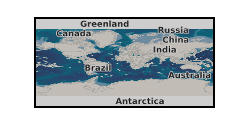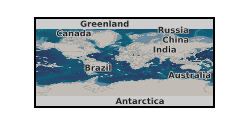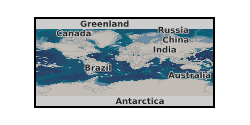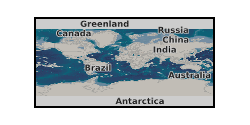Gas hydrates
Type of resources
Topics
Keywords
Contact for the resource
Provided by
Years
Formats
Update frequencies
-

Data for the figures in the manuscript: S. K. Sahoo, H. Marin-Moreno, L. J. North, I. Falco-Suarez,B. N. Madhusudhan, A. I. Best and T. A. Minshull (2018).Presence and consequences of co-existing methane gas with hydrate under two phase water-hydrate stability conditions , Journal of Geophysical Research: Solid Earth. https://doi.org/10.1029/2018JB015598
-

This database is from series of laboratory experiments designed to explore the effect of hydrate cementaion on some sands. This dataset is part of NERC Arctic Landslide-Tsunami Project (http://arp.arctic.ac.uk/projects/landslide-tsunami/) and has been presented in International conference and Journal article (under review) namely, 1) Madhusudhan, B.N. and Clayton, C.R.I. (2016) Influence particle size on strength of gas hydrate cemented granular materials. Wuttke, F., Bauer, S. and Sanchez, M. (eds.) In Energy Geotechnics. CRC Press. 742 pp, pp. 445-449. (doi:10.1201/b21938-71). 2) Madhusudhan,B.N, Clayton, C.R.I. and Priest, J.A ‘1 The Effects of Hydrate on the Strength and Stiffness of some Sands’. Under-review in Journal of Geophysical Research – Solid Earth.
-

The data include: 1. Excell spreadsheets from Sites U1517-C; U1518-f; U1519-C. Each spreadsheet contains detailed mineralogical information aquired with QEMSCAN®. 2. QEMSCAN-50 and QEMSCAN-4 images of the analysed samples. 3. Images (png files) of the sediment cores acquired during the IODP Expeditions. 4. A report on the characterisation of gas hydrate bearing sediments at site U1517, by integrating QEMSCAN, core, LWD, and seismic observations.
-

This dataset is of laboratory ultrasonic shear wave measurements during methane hydrate formation in water saturated Berea sandstone using pulse echo method. We formed methane hydrate and took shear wave measurements during the formation process at different time interval. The hydrate saturation was calculated from measured pressure and temperature changes. This data set was used to show how shear wave velocity and attenuation can be used to estimate permeability of hydrate-bearing geological formations. We observed that velocity and attenuation both increase with hydrate saturation, with two peaks in attenuation at hydrate saturations of around 6% and 20% that correspond to changes in gradient of velocity. These laboratory experiments were conducted in National Oceanography Centre, Southampton by Sourav Sahoo with technical support provided by Laboratory Manager Laurence North. Sourav Sahoo interpreted the data. The hydrate formation process continued for few days and measurements were done mostly during daytime due to limited laboratory access during the night. This data set has been used for the paper published in Journal of Geophysical Research: Solid Earth (DOI 10.1029/2021JB022206)
 BGS Data Catalogue
BGS Data Catalogue